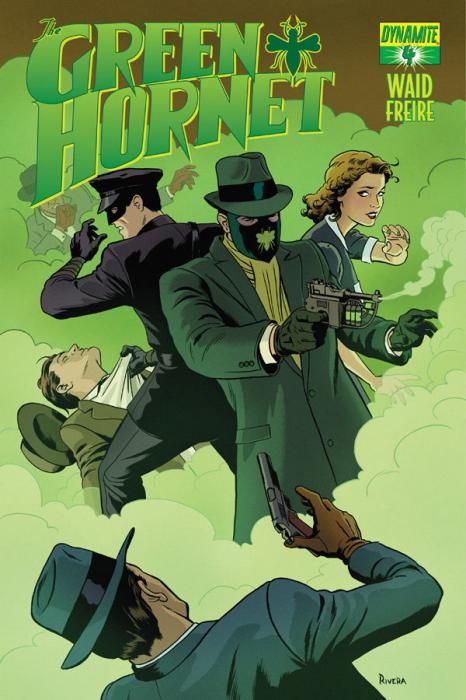In this series so far, Britt Reid has been portrayed as a hero on the edge. Pretending to be a criminal mastermind to get in good with the outlaws, he's starting to muddy the line between hero and anti-hero. Now, this has led to questionable decisions and a lack of thought that threaten to bring down not just the Green Hornet, but also Reid, himself.
Reid doesn't yet see how he's being manipulated in bad ways by the very forces he sees as helpful to his nightly crusade. They influence him too easily, and the seams are starting to show. Kato, who left Reid last month over his questionable actions, hasn't given up on the truth, though. He spends this issue on the streets trying to discover the story that Reid is missing, hoping to set him straight. What he uncovers could backfire on them both.
Reid is busy believing his own hype and the trail of breadcrumbs that have been laid out for him. He continues his crusade with a run for the mayor's office, though it starts with an inconvenient flurry of questions over Winston Mill's tragic suicide. Reid even drafts the cop he paid off last issue to become his new driver. It's a logical next step, but a great illustration of his troubles. As an outsider looking in, the reader can see how all of these decisions are wrong. Reid is still blinded by his hubris. He's not making the kind of ridiculous over-reaches that would make the script feel forced, but it's turning into an avalanche of little things. His pragmatism is starting to look like a bad idea, not an acceptable trade off.
While the first three issues featured art from Daniel Indro, this one feature new artist Ronilson Freire, and he fits right into the style of the series. In fact, if you weren't paying close enough attention, you might not immediately notice the difference. It's there, for sure, with more chaotic panel layouts and slightly stiffer characters, particularly in their faces. If you need to switch artists in the middle of a miniseries, though, this is the way to do it. There are a couple of odd splash page choices near the end of the issue, but I don't know whether to blame that on Freire or Waid's script.
Freire handles the costuming well, particularly for a period piece such as this. The colors from Marcio Menyz provide subtly shading, not just rampant gradients. They're there just enough to suggest folds in the clothing without showing off. The overall color scheme is a little dark, though a sea of characters wearing brown and black suits with hats doesn't exactly lead to an Easter parade. Menyz does a good job in varying up background colors to increase the contrast with the foreground. It's still a tad muddy, over all, but a good effort.
"Mark Waid's Green Hornet" is a classic period political crime thriller. It's not complicated or terribly deep, but it explains itself well and gives all the actions in the story credence. You believe the characters are acting the way they are given what you've seen happen to them and how they respond. And just when you think everything is explained or that the characters are about to see the light, the plot twists another way and the characters run in a new direction. That's makes for fun comics.

